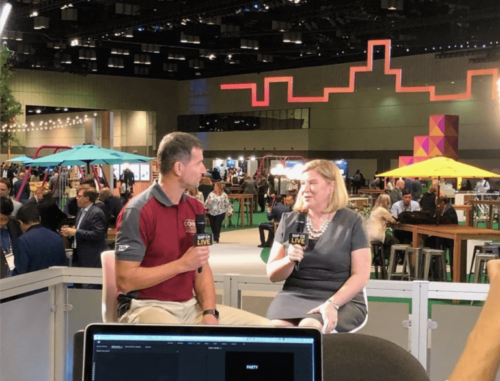Expectations, Education, and Exceptional Experiences
I had the wonderful opportunity to speak to a group of learning professionals and others at SAP Customer Experience LIVE earlier this month as part of the larger SAPPHIRE NOW conference, SAP’s annual 3-day celebration of business and technology, which drew 30,000 guests from more than 100 countries to Orlando, Florida.
Litmos offered a unique track to learning professionals who wanted to understand more about how training and development intersect with customer experience. I was also asked to interview some CX leaders (as pictured) to get the very latest insights into how intelligent enterprises are realizing that every moment matters, all along the customer journey, when it comes to building loyalty and earning advocacy.
I shared how I believe it all starts with expectations – does every person in your organization truly understand the customer experience you want to deliver? Does everyone in your organization understand the promise made to customers?
We talked about several ways these “non-customer-facing” professionals have a greater impact than they may realize on the customer experience. These were just a few of the ways we identified how the customer experience starts way before the customer is addressed.
1. Job Descriptions
What do they say about working together on behalf of the customer? How do they include real language about what experience promises are made to customers and to other team members? Are they too task-oriented, creating a vision of solitary work? What do they say about connecting this job to the customer?
2. Hiring
Indeed.com published the 18 most common job interview questions, which I shared with the group. They include the common strengths/weaknesses questions we’ve all heard, but not one of the questions asked about what sort of experience is important to deliver. What are the values we want to show? What do you think our customers expect of us? Questions about the experience will lead to more thoughtful approaches to work impacting them.
3. Training
We often create training based on a new process rollout or new technology to learn. We know it’s important to make lessons concise and actionable, but we often forget to connect the behind-the-scenes process to the actual experience the customer is having.
One learning professional approached me to share how this was the lightbulb moment for her, because she was often training “for training’s sake.” She bravely admitted how she often doesn’t even know what the process does for the customer, so they definitely don’t share that in training. She was excited to change this and create a meaningful connection between each learning opportunity and the customer experience.
4. Celebrating
Training often culminates with a certificate, or a few letters after our names. (I understand the irony as I have CCXP following my name!) But we don’t often connect a great customer experience with how successful our training was. If we work hard to improve things for customers, we see the results in higher loyalty, increased retention, improved customer metrics like Customer Satisfaction scores or Net Promoter Scores. But how often do we then ask the learning leaders, trainers and those who trained to celebrate how their hard work led to these successful outcomes?
It’s vital to celebrate the connection between learning and customer experience.
5. Collaborating
The big theme of the conference was collaboration. There’s just no way to do business in today’s world without understanding and embracing collaboration. This is true for how we partner with a department in our organization to how we collaborate with a major technology partner. Exploring collaboration in the context of learning and customer experience means reaching out to find out what sort of impact the topic of training has on customers. Maybe it makes things easier for employees, which in turn means customer-facing employees have more time to delve into challenging customer issues. Maybe it’s about collaborating to share customer stories back to the training group, so they can see their work lived out on a greater scale. Maybe it’s about asking leaders in the organization, what’s missing in your customer experience? Where should we create more meaningful learning?
I was so impressed with the training professionals who came to learn. They were open, honest and anxious to change what needs changing. The connections between learning and customer experience are truly everywhere. Now it’s up to each of us to foster that collaboration and improve the experience each step of the way.
For more of my insights from SAP Customer Experience LIVE and SAPPHIRE NOW, please visit me over on the Experience Investigators blog.






